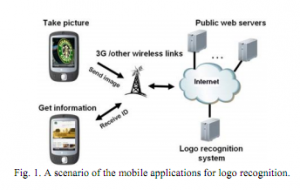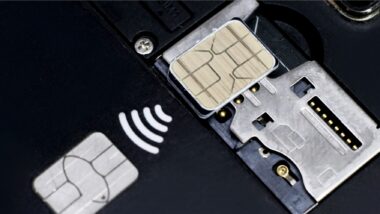Question from Ric Ferraro, Mobverge:
QR codes have been used to a fairly wide extent by advertisers to try and bridge the gap between the virtual world and the physical world – providing consumers a way to benefit from special offers for example.
Given the generally low uptake by consumers of QR codes, when do you think that we will see a switch over from these cumbersome codes to a more streamlined image recognition feature on smartphones?
With image recognition, the idea is that you point and take a picture with the smartphone’s camera without the need of a code reader app. Any logo could then act as a QR code. As it is much easier to provide offers this way, it could really act as a significant boost to better mobile advertising campaigns.
Ric’s question is an intriguing one, and something that we can only really speculate on at the moment. While I have seen logos appear within QR codes – as Brian Benchoff, of the Hack a Day blog explains here – we do expect to see image recognition features in the smartphone camera software of the future.
Facial recognition software is widely used in advanced CCTV and central intelligence monitoring devices today. So much so that scientists at Tokyo’s National Institute of Informatics have recently developed a ‘privacy visor’ to thwart hidden cameras using recognition software.
Facebook famously trialled the facial recognition ‘tagging’ feature, without telling anyone, to mass uproar, but if this kind of technology was being used for a brand it’s a different case entirely. They want to be recognised. Last year, Forbes published The 7 Dos And Don’ts Of Facial Recognition in which they highlight the fact that Facebook ‘voluntarily’ switched off its facial recognition service in Europe following a privacy audit by the Irish Data Protection Commission (DPC).
Computer vision software has been around for some time now, as this (Nike) object recognition video on the Rhonda Software blog demonstrates. Likewise, projects to remove or cover logos exist, but whether this technology will be used on mainstream mobile platforms in order to hyperlink to online information, remains to be seen.
One such report on the matter comes from the Department of Computer Science at National Chiao Tung University. To quote verbatim:
“Visual pattern recognition could play a key role in mobile applications for security check, context recognition, location detection, and museum guidance [1-4]. Fig. 1 depicts a scenario of the mobile applications of the logo images. A mobile user directs his or her mobile phone camera to a logo of interest and captures an image in the camera field of view. A software client built in the mobile device initiates submission of the image to the server via 3G or other wireless links. The web-service reads the message and evokes the logo recognition system to identify the logo in the sever logo database. Then the server sends the corresponding corporate identity back to the client, enabling the user to access to the more detailed and specific information.”
An early indication of the application of this technology is the website Pongr.com which encourages smartphone users to snap photos of a product, email or text it to the service and receive details about a product, based on a recognition database, including how to purchase it and details about the brand. If people are willing to do this, then surely a mobile QR style image scanner is the natural evolution.
To my knowledge, the leader in this field is currently Google Glass, the spectacle device that can identify images and provide instant data. In fact, only recently has Google made a plea for inspiration on how this technology can be used. Check out the launch video below.
httpv://youtu.be/v1uyQZNg2vE
As for mobile ‘logo recognition’ technology replacing QR codes completely, I expect we may actually see resurgence in QR codes in tandem with ‘scanable’ logos. Whereas a logo may only ever provide wider information, or time-sensitive campaign material for marketers to dictate, a QR code serves its purpose as a unique hyperlink to a specific destination. Time will tell if either really takes off with consumers, but there is no question that the technology exists.
Do you know more? Let us know your thoughts below.



